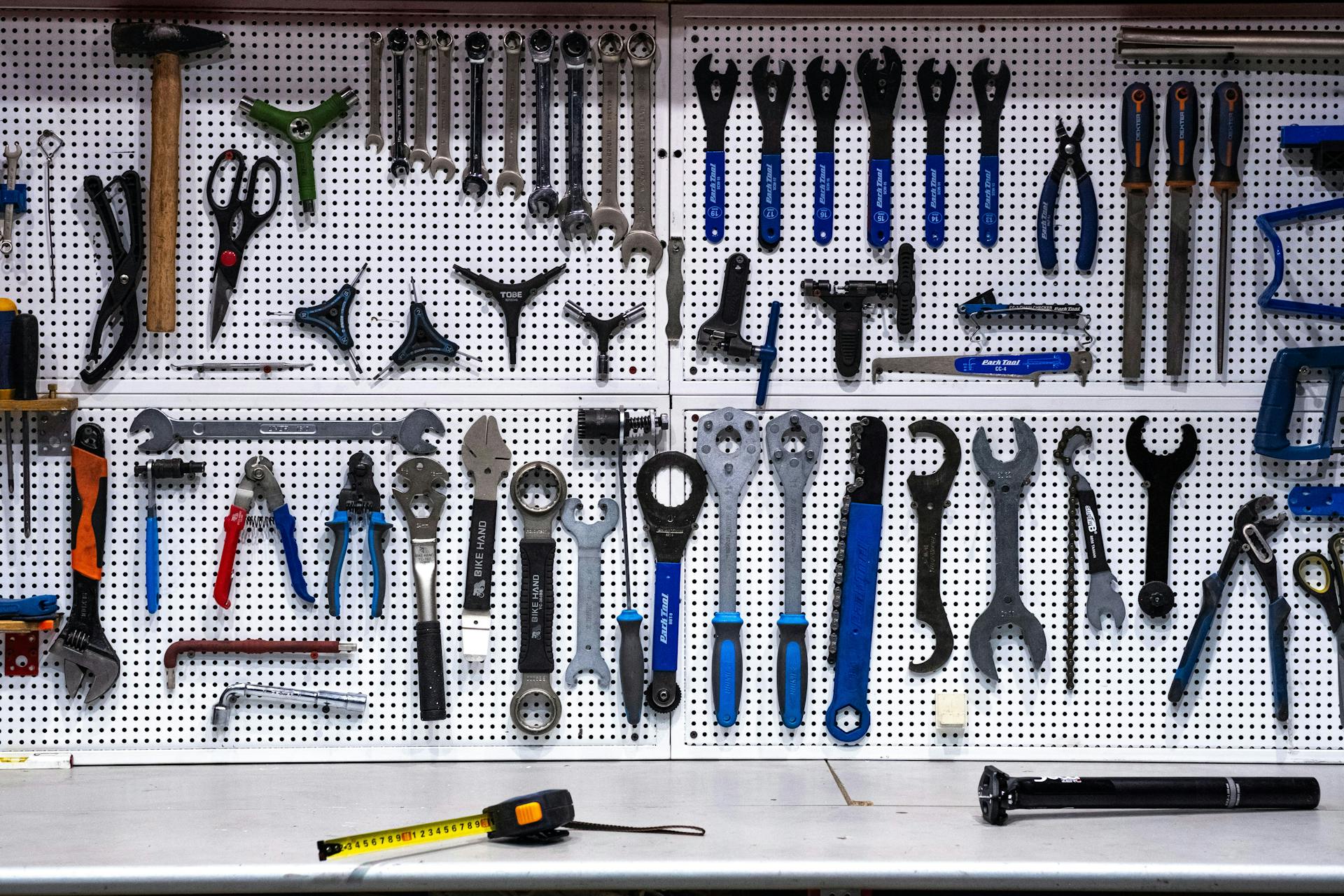Why Every DIY Home Repair Project Needs a Storage Plan
Find your Smart Storage™ unit.
We have locations across the United States providing onsite StoreEase Virtual Customer Service™ and 2 Minute Move In® contactless rental.
We have locations across the United States providing onsite StoreEase Virtual Customer Service™ and 2 Minute Move In® contactless rental.


When diving into a home repair project, most DIY enthusiasts meticulously research tools and techniques while overlooking a critical success factor: storage planning. In garages and spare rooms across the country, promising projects descend into chaos not due to technical challenges, but poor organization.
The lack of proper storage leads to safety hazards, lost time hunting for supplies, and constant workflow disruptions. Projects that should take days stretch into weeks as tools disappear and materials become damaged.
Let’s examine how thoughtful storage strategies can enhance your DIY experience, resulting in safer, more efficient, and successful home improvements.
The true price of disorganization extends far beyond mere inconvenience. What starts as a simple weekend project can stretch into weeks when precious minutes tick away during frantic searches for misplaced tools or buried materials. These delays ripple through household routines, turning simple improvements into ongoing disruptions.
Poor storage conditions silently drain your budget through premature tool deterioration, material waste, and material waste. That expensive saw blade dulls faster when improperly stored, while building materials exposed to moisture or extreme temperatures often become unusable before their time.
In cluttered workspaces, the risk of accidents soars. Nearly one-third of home improvement injuries result from trip hazards, falling objects, and preventable incidents that could have been avoided through proper storage. However, perhaps most frustrating is the psychological toll of working in a chaotic environment. Amidst disorder, even experienced DIYers make poor decisions that lead to costly mistakes, compromised results, or both.
Before purchasing your first supply, take a hard look at your available space. Walk through your home with fresh eyes, identifying various spaces, from obvious storage areas to overlooked nooks, that could temporarily serve as project zones. That unused corner of the garage or space under the stairs might be exactly what you need.
The scope of your repair dictates your storage needs. A weekend bathroom fixture replacement requires far different organization than a month-long kitchen renovation. Most experienced DIYers recommend dividing your workspace into three distinct zones: one for active tools in constant use, another for frequently needed materials, and a third for occasional supplies.
Looking up often reveals the solution to ground-level storage challenges. Walls and doors offer vast untapped potential for vertical storage, keeping essential items accessible while freeing up precious work surfaces. This approach transforms two-dimensional spaces into three-dimensional storage opportunities.
Different types of repairs demand unique storage solutions. Electrical projects thrive on small, compartmentalized containers that keep components sorted and protected, while painting tasks require cleanup-friendly staging areas that prevent spills from becoming disasters.
Smart storage planning evolves through three distinct phases. The preparation phase focuses on organizing materials and tools before work begins. During active work, the emphasis shifts to maintaining order while keeping frequently used items within arm's reach. When work is finished, the cleanup phase requires systems for efficiently storing or disposing of leftover materials.
Rather than seeking one-size-fits-all solutions, successful DIYers customize their storage based on three key factors: how often they need to move tools around the workspace, what space limitations they face, and which specific tools their project requires. This tailored approach ensures that storage enhances rather than hinders workflow.
Mobile tool stations have revolutionized DIY organization by allowing your most frequently used implements to travel with you. Instead of creating multiple storage spots throughout your workspace, a well-designed cart keeps everything you need within easy reach, right alongside your progress.
At eye level, magnetic strips transform walls into instant-access tool storage. Gone are the frustrating moments of digging through toolboxes mid-task; each wrench, screwdriver, and implement stays visible and immediately accessible. Clear containers serve as visual inventory management systems, instantly revealing missing items before their absence can derail your momentum.
Color-coding dramatically improves tool organization when multiple household members share a workspace. Studies show that tools return to their designated spots 65% more reliably when visual cues guide the process. Meanwhile, pegboards continue earning their place in DIY spaces by offering unmatched flexibility. As project needs evolve, these adaptable systems allow quick reconfiguration while maximizing vertical storage potential.
Materials often represent the largest financial investment in any DIY project, yet improper storage leads to countless dollars wasted through preventable damage. Warping, moisture infiltration, and contamination can render expensive materials useless before they are even used.
Stackable containers with secure lids provide a modular solution for building materials, protecting against the silent project killer: dust contamination. Even minor dust accumulation can compromise adhesion and finish quality, rendering what should be professional results as obvious DIY telltale signs.
When working with moisture-sensitive items like wood and drywall, elevating materials off the floor prevents damage from ground moisture. These materials act like sponges when stored directly on concrete, absorbing ambient humidity that leads to warping and mold. Proper labeling transcends simple organization – it ensures the right materials get used at the right time, preventing costly mistakes that force entire sections to be redone. Temperature-sensitive items demand extra attention, with paints, caulks, and adhesives requiring protection from environmental extremes that can render them unusable.
Portable storage caddies with dedicated compartments combat "scattered tool syndrome,” that frustrating phenomenon where tools migrate throughout your workspace as projects progress. When specific spots are assigned for phase-specific tools, these mobile units keep everything in its place even as your focus shifts between tasks.
Clear plastic shoe organizers, temporarily mounted on doors or walls, transform into surprisingly effective small-parts management systems. Their transparent pockets make finding specific hardware effortless while keeping items organized by type, size, and function. This simple solution prevents the common frustration of mixing up similar-looking fasteners or losing tiny but crucial components.
Bathroom renovations present unique storage challenges due to high humidity levels. When working in bathrooms, moisture-resistant containers help safeguard both materials and tools from corrosion and water damage. Without proper protection, even brief exposure to bathroom humidity can compromise expensive materials or cause valuable tools to rust.
Kitchen projects require careful separation between construction zones and food preparation areas to prevent contamination. To prevent cross-contamination, establishing distinct storage areas keeps building materials isolated from food-safe spaces. Paint projects demand specialized storage solutions that prevent brush deterioration between sessions. Humid containers extend brush life, reduce cleanup time, and ensure consistent application. Proper paint storage also prevents waste and ensures consistent application.
Flooring installations succeed or fail based largely on material acclimation. Proper storage areas must provide level surfaces and stable environmental conditions, as improper storage often leads to expansion or contraction issues that only become apparent months after installation. Outdoor projects are constantly exposed to weather threats, making secure and waterproof storage essential, even during brief work interruptions.
Children and pets face significant risks from unsecured tools and materials during home improvement projects. Proper storage dramatically reduces these dangers by keeping hazardous items out of reach and sight. Even brief exposure to construction materials can pose serious risks to curious explorers.
Elevated storage of hazardous materials prevents accidental exposure to chemicals that can cause respiratory issues or skin irritation. These effects often appear days after initial contact, underscoring the importance of avoiding them through proper storage for the sake of household safety.
Fire safety improves markedly with organized storage solutions. Improperly stored solvents, oil-soaked rags, and flammable materials contribute to thousands of home fires each year. Strategic storage prevents accidents while simultaneously containing potential fire hazards before they can spread.
Major renovations often displace substantial amounts of household contents, creating a domino effect of clutter that can paralyze progress. Professional storage solutions offer a practical solution, freeing up valuable workspace while protecting cherished possessions from dust and damage.
Climate-controlled storage units provide ideal conditions for material acclimation, particularly valuable for temperature-sensitive items such as hardwood flooring and cabinet components. These controlled environments eliminate the risk of material damage from fluctuations in household temperature or changes in humidity.
Partner with us at Store Ease for flexible storage solutions that grow with your project needs. Whether you require a small unit for excess furniture or a larger space for staging renovation materials, our scalable options ensure your project maintains momentum without sacrificing living space.
The line between chaotic, stressful projects and smooth, satisfying ones often comes down to effective storage planning before the first tool is taken out of its box. When you implement thoughtful organization from the outset, you create an environment that fosters efficiency and success. With proper storage strategies in place, your next DIY project stands a much better chance of coming in under budget and ahead of schedule. The time invested in storage planning pays dividends throughout your project, transforming what could be a chaotic ordeal into a satisfying achievement.
Ready to put your storage plan into action? Consider how these strategies can help your next project run more smoothly, safely, and efficiently. More importantly, you will achieve professional-quality results with significantly less stress and frustration, because the difference between DIY success and frustration often comes down to what happens before the actual work begins. The themes we have explored, from maximizing limited space to protecting materials and ensuring safety, all contribute to the ultimate goal: turning your DIY aspirations into completed projects you can proudly showcase.